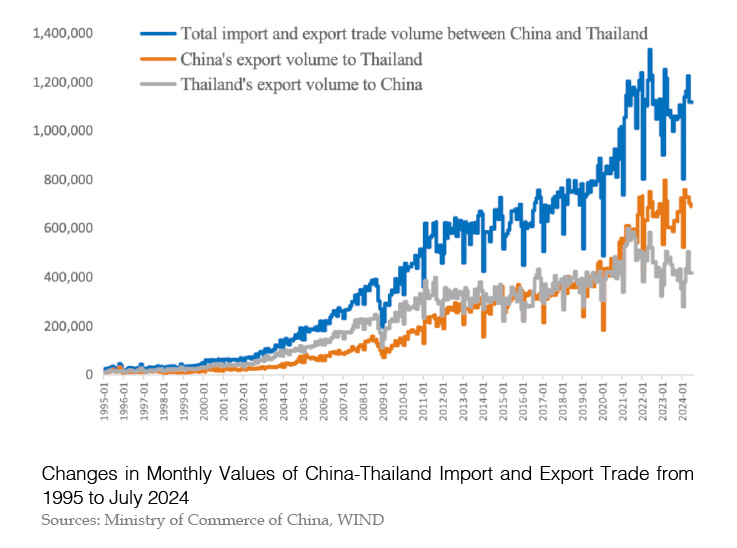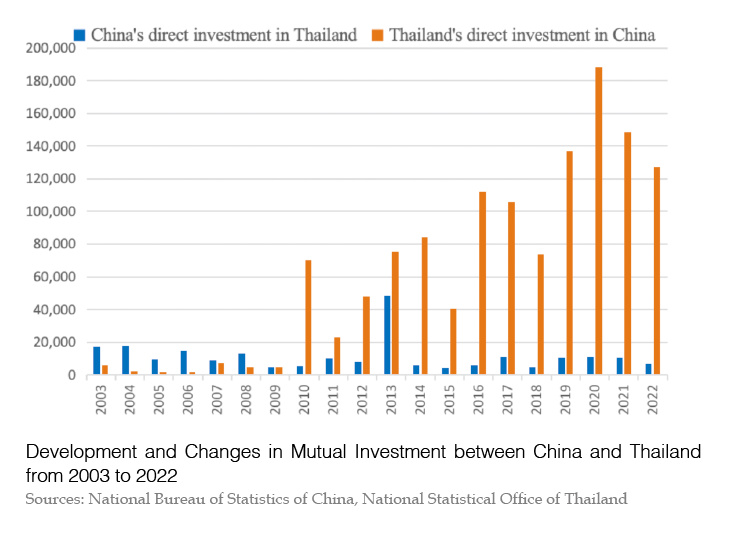Accelerating and Enhancing Thailand 4.0 Integration with the Digital Belt...
Title: Accelerating and Enhancing Thailand 4.0 Integration with the Digital Belt and Road Initiative through New Quality Productive Forces
The digital Belt and Road Initiative (BRI) encompasses the construction of digital infrastructure, digital economy cooperation, industrial digitalization and intelligent transformation, as well as cultural exchanges and cooperation in the digital realm. The digital BRI is fundamentally driven by new quality productivity, implementing innovation-driven development.
New quality productive forces are driven primarily by innovation, with technological innovation driving industrial innovation. The core principle is innovation-driven development. New quality productive forces represent advanced and green productivity, which both China and Thailand are striving to develop. The core of China's high-quality economic development is innovation-driven development, with new quality productive forces being an inherent requirement and key focus for high-quality development. They serve as the engine for advancing Chinese-style modernization.
Both China and Thailand share similarities in their approaches to economic development, with a significant emphasis on innovation, which is why the two countries enjoy close ties. In recent years, to promote economic growth and transformation, Thailand has advanced the large-scale economic reform plan "Thailand 4.0". Thailand 4.0 was first introduced in 2016 as part of the Thai government’s national development plan.
Close Ties between China and Thailand: Increasingly Close Economic and Trade Ties, Investment Cooperation
Trade between China and Thailand has been increasing annually
Economic and trade cooperation between China and Thailand has been strengthened. Trade between the two nations has witnessed a year-on-year and month-on-month growth. In 2023, trade between China and Thailand reached amounted to US$126.3 billion. And in 2022, China-Thailand import and export trade volume reached US$135 billion. Chinese enterprises directly invested US$4.6 billion in Thailand, up 109% year-on-year. For several consecutive years, China has been the largest source of tourists to Thailand.
Mutual investment between China and Thailand has been increased. In 2013, Thailand's investment in China peaked at US$480 million. Fast forward to 2023, China's investment in Thailand has reached an even more impressive figure of over US$4.6 trillion.
E-commerce Cooperation between China and Thailand
China has signed e-commerce cooperation mechanisms with more than 30 countries, including Thailand. On November 19, 2022, China's Minister of Commerce WANG Wentao,Thailand's Deputy Prime Minister and Minister of Commerce Jurin Laksanawisit jointly signed the Memorandum of Understanding on E-commerce Cooperation between the Ministry of Commerce of the People's Republic of China and the Ministry of Commerce of the Kingdom of Thailand in Bangkok, the capital of Thailand. The development of e-commerce between China and Thailand is progressing rapidly. Through e-commerce and digital economy cooperation, China -Thailand economic and trade cooperation has been upgraded in quality.
By 2023, the digital economy accounted for 60% of China's GDP, placing it among the world’s leaders. For many consecutive years, China has led the world in both the scale and speed of e-commerce development. Supported by the Thailand 4.0 policy, Thailand's e-commerce sector has also seen rapid growth in recent years, offering significant potential for cooperation in the digital economy, cross-border e-commerce, and e-commerce between China and Thailand.


Accelerating the Integration of Thailand 4.0 with the BRI through New Quality Productive Forces
Thailand 4.0 is an innovation-driven growth strategy that aims to transform Thailand from a traditional economy to one that is driven by innovation. The high-quality development of the BRI is an important path for high-level openness and high-quality development. The digital BRI is a combination of the digital economy and the real economy and is a key path for the development of new-quality productive forces. Digital BRI includes smart cities, e-commerce, smart transportation, intelligent manufacturing, etc. Thailand 4.0 naturally aligns with the digital BRI.
Driven by innovation, China and Thailand’s corresponding policy visions have emerged, with consistent implementation paths and goal orientations. The development of new quality productive forces focuses on the transformation and upgrading of traditional industries, as well as the development of emerging and future industries. This includes the high-end, intelligent, and green transformation and upgrading of traditional industries, the rapid development of new energy vehicles, the low-altitude economy, artificial intelligence, and other emerging and future industries, thus enhancing the level of industrial and supply chains.
Thailand 4.0 is a national development plan announced by the Thai government to promote national economic transformation through technological innovation and drive manufacturing sector up the value chain. It focuses on the development of twelve key target industries, which can be divided into two main categories: upgrading existing industries with advanced technology and fostering emerging industries. These emerging industries include the automotive industry, digital economy, automation and robotics, aerospace industry, smart agriculture, tourism, and medical tourism. This aligns with the development paths and industrial carriers of new-quality productive forces, encompassing both the transformation and upgrading of traditional industries and the development of intelligent connected vehicles, low-altitude economy, artificial intelligence, and other emerging industries, along with similar directions for upgrading industrial and supply chains.
Thailand 4.0 is a strategic national project advanced by the Thai government to transform the country’s economy into a more advanced and innovation one. It is essentially an upgraded version of Thailand economy, with each era representing a different stage of economic development. Thailand 1.0 represents the agricultural era. Thailand 2.0 is the era of light industry and Thailand 3.0 is the era of heavy industry, including steel and equipment industries. Thailand 4.0, on the other hand, represents the new economic era, encompassing the digitalization, intelligence, and greening of traditional industries, as well as the development of emerging and future industries.
Thailand 4.0 aims to bring Thailand into the ranks of high-income countries within 20 years. New quality p

